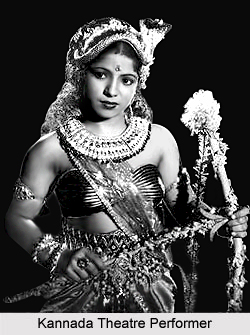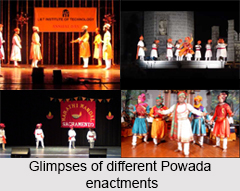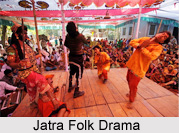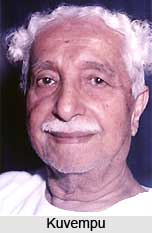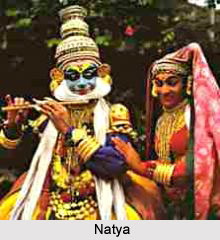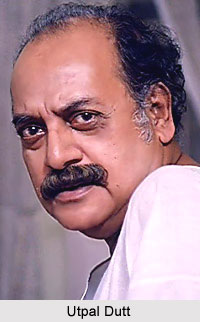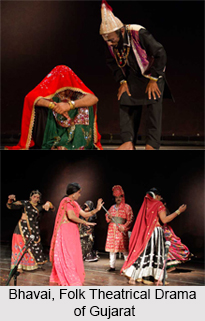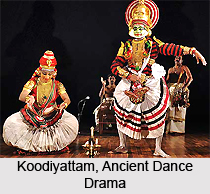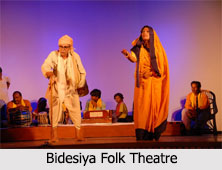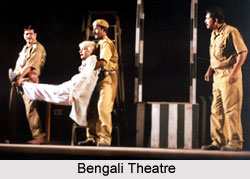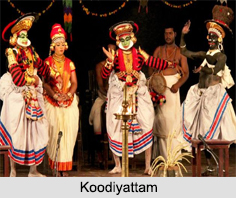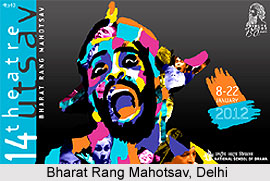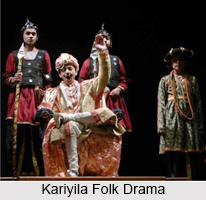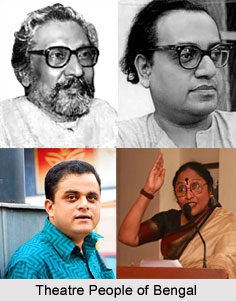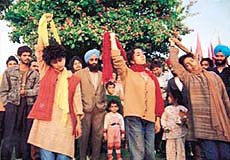 "If street theatre has any definite tradition in India, it is the anti-imperialist tradition of our people forged during the freedom movement. In other parts of the world it is the peoples` struggle for a just social and economic order."-Safdar Hashmi.
"If street theatre has any definite tradition in India, it is the anti-imperialist tradition of our people forged during the freedom movement. In other parts of the world it is the peoples` struggle for a just social and economic order."-Safdar Hashmi.
Indeed, Indian street theatre developed as an art form to illustrate the feelings of common people; hence germinated a whole new theatre form, which was then typically categorized as "theatre by the people and theatre for the people". Common people, day-to-day life, problems and the colors of daily life gained a dimension in Indian street theatre whilst making this particular genre of Indian "natya" to stand apart amidst the crowd. Although the art lovers and the exponents of the Indian theatre did mark that it is with the independence of India, this particular theatre form became quite an impressive art form in portraying the socio-political and the economical condition of independent India yet the thinker says that Street theatre as an expression of common people was there even in the ancient days of remote past and was ingrained in the age-old Indian traditions. The presence of the sutradhar in Indian puppetry and the very existence of the narrator in Indian folk theatre further assert this truth. Although the very kernel of the modish aspects in the Indian theatre was sown during that era yet it is during and after the independence of India, Indian street theatre drastically developed as an artistic expression in illustrating the colors of daily life. Gradually Indian street theatre became an effort of communicating the message of the mass; an attempt in illustrating the realities of daily life.
For the very first time the verve of the Indian Natya broke all the boundaries of orchestra, galleries, audience, music, songs, pits and stage to finally reach the common people. Quite ideally therefore Indian street theatre became an endeavor in addressing the burning political, social and other communal issues of independent India. Theatre then was just not a form of entertainment but evolved as an endearing art form in creating the social awareness. Indian street theatre therefore reached people of all strata whilst addressing all sorts of social, political and religious ailments.
"Skits" or the street theatre are therefore a much direct, brief and concise theatrical expression. The objective is mainly to convey a particular idea or to portray a significant meaning amidst the direct, intimate and effective means of dramaturgy.
Chargesheet (1949) was among the earliest street plays in Calcutta. Chargesheet was performed at Hazra Park, Kolkata to an audience of thousands of workers, and later repeated many times across West Bengal. In terms of form, though, early street theatre seems to have mimicked the stage, with the action often taking place in front of a wall or some other backdrop, and actors entering from and exiting into makeshift wings; a few plays like Utpal Dutt`s Din badaler pala (Pala of Changing Times`, 1967) were more elaborate, stretching to three hours. Even so, further formal innovations had to wait a new generation of artist-activists.
The broken and sporadic history of the movement in India coincided with periods of political unrest. During the turbulent 1970s, Calcutta saw hundreds of such performances by radical outfits. With the Emergency declared by the central government, repression unleashed against Communists, and the revolutionary Naxalbari uprising in Bengal, street theatre entered a new and potentially dangerous phase. Performers were attacked, often by the police, which resulted in the death of at least two activists, Ashis Chatterjee of Theatre Unit in 1972 and Prabir Datta of Silhouette in 1974. Many others were arrested, beaten up, tortured. In terms of form, Badal Sircar`s work had great influence. Abandoning mainstream drama, he took to open-air performance, communicating with the dissatisfied and uprooted urban working class in an intensely physical style. Although he does not see himself as part of the movement, many street theatre groups benefited from the workshops he held all over the country. Bengal continues to have a vibrant tradition with regular shows performed by such veterans as Probir Guha
Safdar Hashmi`s Jana Natya Manch (or Janam), formed in 1973, led the movement of Indian street theatre. Till 2002, it had notched up about 7000 performances of fifty-eight street plays, many of them later translated or adapted by groups across south Asia. Its first such play, Machine (1978), is a classic; Aurat (`Woman`, 1979), Hallabol`(`Attack!`, 1988), zndArtanad (`Scream`, 1996, on sexual abuse of children) exemplify a popular political theatre that features direct confrontation and energy as well as artistry. Theatre Union (1983-9, in Delhi), counting among its members Anuradha Kapur, Maya Rao, and Rati Bartholomew, did some excellent street productions, such as Toba Tek Singh based on Saadat Hasan Manto`s short story. Another Delhi group, Nishant, is led by Shamsul Islam and his wife Neelima. In Punjab, Gursharan Singh persevered with street theatre advocating social change and civil rights for over two decades, through the years of militancy (1980s), braving threats to his life, and inspiring a whole generation of young theatre workers. In Gujarat, the groups Samvedan, Garage, Lok Kala Manch (all in Ahmadabad), and Parivartan (in Vadodara) perform street plays.
South India has some of the best exponents, starting with Samudaya (formed 1975) and its many units in Karnataka, while among Kannada dramatists, Chandrashekhar Patil used the form to satirize social evils and human follies. Although Samudaya enacted Belchi (1978), on the true story of a Dalit massacre in Bihar, around 2500 times, its productivity decreased over the years. However, 1989 marked a turning point for street theatre after Hashmi`s shocking murder during a show: 30,000 performances paid tribute on his birthday, 12 April, now observed across India as National Street Theatre Day. Among the groups that took to street theatre as a direct response to Hashmi`s death was the revitalized Praja Natya Mandali in Andhra Pradesh. Nija Nataka Iyakkam (formed 1978 in Madurai) performs very physical and energetic Tamil street theatre, while the Marxist Chennai Kalai Kuzhu (formed 1984 in Madras) skilfully employs a lot of colour, delightful slapstick, as well as sheer poignancy. Kerala also has considerable street theatre.
The movement has now spread to all states; in Orissa, for instance, Natya Chetana sets an example. Feminists, both of the left and non-left, produced high-quality street plays from the 1980s. The most notable among these are Om swaha (1979), originally performed for Stree Sangharsh and then taken up by Theatre Union, and Mulgi jhali ho (A Girl Is Born, 1983) written by Jyoti Mhapsekar of Stree Mukti Sangathana, Bombay. In 1984, the shocking death of thousands after a poison gas leak from the Union Carbide plant in Bhopal sparked off protest theatre at street corners in many towns, some groups mobilizing support and donations for survivors. During the 1990s, non-governmental organizations (NGOs) used street theatre to promote ecological consciousness, AIDS awareness, and family planning. Didactic in purpose, most of this work is of indifferent theatrical quality. Whereas leftist street groups solicit voluntary audience donations to cover costs after concluding their shows, NGO theatre for development is normally financed by donor agencies, often foreign.
Anywhere or rather everywhere in modern India street theatre has become an eminent form of expression. A journey which started long back with the dreams of Safdar Hashmi has gained a proper shape whilst delineating Indian Natya to stand apart with pride.







